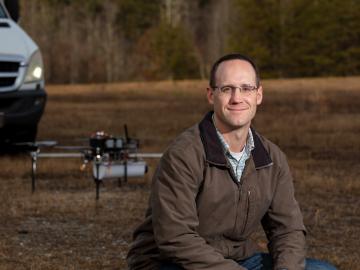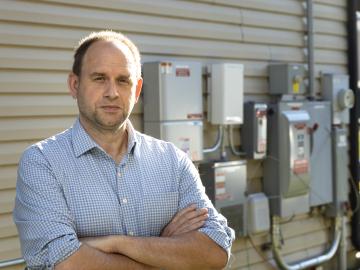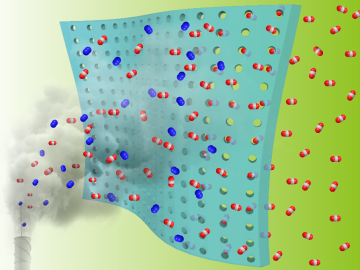
Filter News
Area of Research
- Advanced Manufacturing (2)
- Biology and Environment (33)
- Computational Engineering (1)
- Computer Science (2)
- Energy Science (69)
- Fusion and Fission (7)
- Isotope Development and Production (1)
- Isotopes (16)
- Materials (71)
- Materials Characterization (1)
- Materials for Computing (7)
- Materials Under Extremes (1)
- National Security (16)
- Neutron Science (21)
- Nuclear Science and Technology (4)
- Quantum information Science (1)
- Supercomputing (36)
News Type
News Topics
- (-) Biomedical (30)
- (-) Clean Water (9)
- (-) Cybersecurity (23)
- (-) Energy Storage (56)
- (-) Frontier (19)
- (-) Isotopes (33)
- (-) Materials Science (71)
- (-) Microscopy (28)
- 3-D Printing/Advanced Manufacturing (61)
- Advanced Reactors (14)
- Artificial Intelligence (44)
- Big Data (20)
- Bioenergy (48)
- Biology (53)
- Biotechnology (17)
- Buildings (25)
- Chemical Sciences (44)
- Composites (15)
- Computer Science (77)
- Coronavirus (23)
- Critical Materials (13)
- Education (3)
- Element Discovery (1)
- Environment (78)
- Exascale Computing (16)
- Fossil Energy (1)
- Fusion (26)
- Grid (23)
- High-Performance Computing (43)
- Hydropower (2)
- ITER (3)
- Machine Learning (23)
- Materials (69)
- Mathematics (5)
- Mercury (6)
- Microelectronics (1)
- Molten Salt (3)
- Nanotechnology (35)
- National Security (35)
- Neutron Science (64)
- Nuclear Energy (44)
- Partnerships (33)
- Physics (42)
- Polymers (18)
- Quantum Computing (14)
- Quantum Science (36)
- Security (19)
- Simulation (18)
- Space Exploration (3)
- Statistics (1)
- Summit (24)
- Transportation (38)
Media Contacts

Researchers at ORNL used quantum optics to advance state-of-the-art microscopy and illuminate a path to detecting material properties with greater sensitivity than is possible with traditional tools.

A team led by Oak Ridge National Laboratory developed a novel, integrated approach to track energy-transporting ions within an ultra-thin material, which could unlock its energy storage potential leading toward faster charging, longer-lasting devices.

Oak Ridge National Laboratory researchers have designed and additively manufactured a first-of-its-kind aluminum device that enhances the capture of carbon dioxide emitted from fossil fuel plants and other industrial processes.

Horizon31, LLC has exclusively licensed a novel communication system that allows users to reliably operate unmanned vehicles such as drones from anywhere in the world using only an internet connection.

Real-time measurements captured by researchers at ORNL provide missing insight into chemical separations to recover cobalt, a critical raw material used to make batteries and magnets for modern technologies.

Joe Hagerman, ORNL research lead for buildings integration and controls, understands the impact building technology innovations can have during times of crisis. Over a decade ago, he found himself in the middle of one of the most devastating natural disasters of the century, Hurricane Katrina.

After its long journey to Mars beginning this summer, NASA’s Perseverance rover will be powered across the planet’s surface in part by plutonium produced at the Department of Energy’s Oak Ridge National Laboratory.

A team led by Dan Jacobson of Oak Ridge National Laboratory used the Summit supercomputer at ORNL to analyze genes from cells in the lung fluid of nine COVID-19 patients compared with 40 control patients.

Five researchers at the Department of Energy’s Oak Ridge National Laboratory have been named ORNL Corporate Fellows in recognition of significant career accomplishments and continued leadership in their scientific fields.

Researchers at the Department of Energy’s Oak Ridge National Laboratory and the University of Tennessee, Knoxville, are advancing gas membrane materials to expand practical technology options for reducing industrial carbon emissions.


